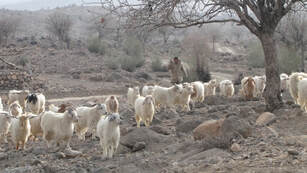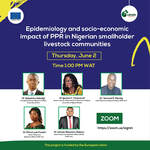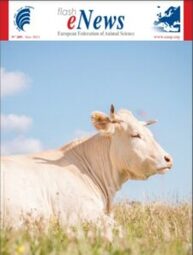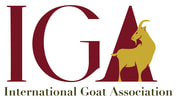|
To find your country’s status on the UNDP HDI Index, follow this link:
https://hdr.undp.org/data-center/country-insights#/ranks The registration fee includes the following:
For more information, visit the conference website at https://www.icg2022.org/.
0 Comments
College of Veterinary Medicine Small Ruminant Program Iowa State University, Extension & Outreach, Dairy Team Dairy Goat Management channel Dairy Goat Housing, Ventilation and Milking Systems
Join Iowa State University Extension and Outreach Dairy Team as Field Ag Engineer, Brian Dougherty and Extension Dairy Specialist, Larry Tranel, provide information on dairy goat housing, ventilation, and milking systems. CAE and what you need to know!
Join Dr. Paul Plummer, Iowa State University, College of Veterinary Medicine, and Executive Director of National Institute of Antimicrobial Resistance Research and Education, as he discusses what CAE (Caprine Arthritis Encephalitis) is and practical ways to manage the spread of CAE in your herd. Written by Tania Perálvarez Puerta Lack of data There is little information on the use of antibiotics in sheep and goats compared to other species. This may be because of the characteristics of the sector, which in general is very heterogeneous and not very high-tech (in some countries), which can make data collection and communication difficult. The collection of data on the use of antibiotics in small ruminants must be encouraged. This lack of data is a problem as in order to be able to determine the best antibiotic reduction strategy, we need to know details of antibiotic use in the sector: quantities, routes of administration, seasonality, variability between farms etc.
 Pu Jiabi and Beth Miller together in 2014. Pu Jiabi and Beth Miller together in 2014. Written by Beth Miller, past president of IGA (2016-2021) I learned many things from my decades of friendship with Dr. Pu Jiabi. He was my first friend from China, and a masterful tour guide, with an incredibly detailed knowledge of local history. Although he was already a well-established and respected veteran of the Animal Husbandry Bureau in Sichuan, China, he wanted to know how animals were managed in other settings and to create novel approaches for the Chinese situation. He was always curious and wanted to learn as much as possible about every new place he visited. Dr. Pu was passionate about combining goats and training to raise people from poverty to security. He was committed to the mission of the IGA and felt that greater attention to goats could create opportunities for resource-poor people everywhere, especially in Asia. He supported Heifer’s sponsorship of IGA to bring greater recognition of goats as a critical and valuable resource. As an energetic Board member and leader, Dr. Pu was instrumental in organizing the 6th International Conference on Goats in Beijing, China, in 1996. He served as IGA Regional Director for Asia and as an IGA Board member from 1994 to 2002. I remember Dr. Pu as a visionary leader and a tireless experimenter, but most of all as a great friend who always made me feel welcome. His enduring legacy is his many students rising to leadership positions in Animal Husbandry and thousands of rural people who enjoy greater prosperity from his work with Heifer China. Former Director of Heifer China
Dear Friends, I am sad to send this message out. Dr. Pu Jiabi, former Country Director for Heifer China, and IGA Board member, passed away peacefully last Saturday, June 4th, at 94. He was cremated, and his family held a brief funeral ceremony. I expressed our respect and made a memorial speech at the ceremony. Dr. Pu worked as a breeding expert in the Sichuan Provincial Bureau of Animal Husbandry in China for about 40 years. He made significant contributions to breeding and improving livestock and poultry in Sichuan. In 1984, Dr. Pu visited Heifer International as a Sichuan Provincial Bureau of Animal Husbandry delegation member. He then submitted some project proposals, of which three were approved for funding by Heifer. Najmeh Kargar (1), Nader Papi (2), and Farhad Mirzaei (2) 1. Agricultural Research Education and Extension Organization (AREEO), Animal Science Research Department, Kerman Agricultural and Natural Resources Research and Education Center, AREEO, Kerman, Iran. 2. Agricultural Research Education and Extension Organization (AREEO), Animal Science Institute of Iran, Karaj.  A flock of Raeini Cashmere goats A flock of Raeini Cashmere goats History of goat breeding in the province To know the history of raising Cashmere goats, one should refer to Kerman’s history of cashmere products. Raising Cashmere goats was earlier than the cashmere products. The shawl was one of the essential cashmere products in the past. The definition of shawl by Dehkhoda is cashmere or wool textiles woven in Iran, especially in the city of Kerman. Also, a shawl is defined by Moin: as a simple or patterned textile that is woven from cashmere or wool. For the first time in historical references (Georgie Zidane), the Kermani shawl is mentioned around 333AH and 944AD. Marco Polo refers to knitted products in Kerman in his travelogue. Telegrapher reported 15,000 shawls woven and many shawls production workshops in Kerman in 1879. During the reign of Fath-Ali Shah Qajar, the number of Cashmere goats grew in other areas of Iran, but the quality and quantity of cashmere production declined. Bastani Parizi believes that the production of desirable cashmere is due to the low rainfall in Kerman.  The EU-funded LIDISKI project (www.lidiski.org) is organizing a webinar this Thursday, June 2nd, at 1 pm WAT to share current knowledge about the epidemiology and socioeconomics of PPR in Nigeria. Important Announcement: Update on the 13th International Conference on Goats, September 18-23, 20225/17/2022 The 13th International Conference on Goats, originally scheduled to be hosted in Hungary, will be conducted entirely in a virtual format.
The IGA Board of Directors considered many issues before making this decision. COVID-19 and international and national restrictions caused by the pandemic resulted in the conference's postponement twice from its original date of 2020 until 2022. The political and financial instability caused by the war in Ukraine has again put the conference at risk. Rather than delay again, the Board agreed that the conference should go ahead, but in virtual format only. Accordingly, the abstract submission deadline has been extended to JULY 10th, 2022 Please review the following regarding the structure of the conference:
 EAAP Newsletter n. 209 where the article appeared on 9th November 2021 EAAP Newsletter n. 209 where the article appeared on 9th November 2021 by R. Rupp SMARTER has held the third annual meeting from 11th to 22nd of October 2021, once again by video conference because of the COVID crisis. The agenda for the remote SMARTER included 3-hours meetings per WPs with 17 to 56 participants each. The meeting gave an overview of the great work achieved during the third year of the project. Despite the sanitary crisis, many new research results were delivered recently, with 7 papers submitted in 2021. New results were presented on proxies and genetic parameters for feed efficiency, feed intake and methane emission (WP1) and for resilience traits (health such as parasite resistance, immune response and mastitis, behavior, well-being, longevity and lethal mutations) (WP2) in sheep and goat. First results from trade-off experiments created in SMARTER (milk production dairy sheep line, goat longevity lines, residual feed efficiency sheep lines) were delivered (WP3). The experiments feed two allocation models in sheep and goat (WP3 and WP7). Additionally, a method for characterising resilience based on short time responses to infection was proposed (WP3). New methods for maintaining genetic diversity in genetic conservation programs were evaluated (WP5). Also, the general use of method LR (“Linear Regression”) for evaluating bias and accuracy in small ruminant genetics was endorsed (WP5). International Evaluation in sheep and goats (WP6) has progressed. Indeed, first analyses of across-country merged data were achieved in western Pyrenean Dairy Sheep (Spain and France) and in Saanen and Alpine goats (Canada, France, Italy, Switzerland). Moreover, harmonization and wider international cooperation is being promoted by multi-lingual questionnaire that were widely shared among partners. WP4 (genetic diversity) and WP7 (balancing breeding goal) consolidate their data collection and methods before analyses can progress. Several of the new results were presented during the EAAP meeting in Davos. Five theatre presentations and two posters were undertaken by four SMARTER partners (INRAE, INIA-UY, AUTH and FiBL/QUALITAS…) All the presentations will be available on SMARTER website. The majority of SMARTER Consortium agreed to ask for an 8-month extension (end June 2023) to allow partners to better consolidate and integrate results that were delayed because of the COVID-19 crisis. We hope that the roundtables with stakeholders (WP9) can take place in 2022 (within each country) as initially planned, as well as a face-to-face meeting in Leon before summer. Kjersti Selstad Utaaker, Suman Chaudhary, Tsegabirhan Kifleyohannes, and Lucy Jane Robertson
Goats are a primary or additional income source for many families in resource-poor areas. Although often considered inferior to other livestock, the resilience of goats and their ability to thrive in a range of environments means that that they are of particular value. Furthermore, goats emit less methane than other livestock species. In these same areas, it is well-documented that cryptosporidiosis has a substantial impact on infant morbidity and mortality, as well as reducing child growth and development. As Cryptosporidium also causes diarrheal disease in goats, the question arises whether goats may represent a reservoir of infection to humans. Epidemiological studies regarding the potential for transmission of Cryptosporidium between goats and humans have largely concluded that Cryptosporidium species infecting goats are not zoonotic. However, these studies are mostly from developed countries, where goat husbandry is smaller, management routines differ greatly from those of developing countries, contact between goats and their owners is more limited, and cryptosporidiosis has less impact on human health. In this article, background information on goat husbandry in different countries is provided, along with information on Cryptosporidium prevalence among goats, at both the species and sub-species levels, and the potential for zoonotic transmission. The intention is to indicate data gaps that should be filled and to increase awareness of the role of goats as providers for low-income families, often living in areas where cryptosporidiosis is endemic and where appropriate baseline interventions could have a positive impact, regardless of species of goat or parasite. Introduction Goats are one of the species of livestock that were domesticated earliest, and are used worldwide for milk, meat, and hair/skin. Nowadays, goats are among the most popular and beneficial livestock for those with limited resources (1). Small-scale goat production is of considerable benefit to families and communities globally, in a variety of climates and conditions. |
IGA Blog
The International Goat Association promotes goat research and development for the benefit of humankind, to alleviate poverty, to promote prosperity and to improve the quality of life. Archives
May 2024
Categories
All
|
|
International Goat Association
2516 Millbrook Rd., Little Rock, AR72227 USA email: [email protected] -454-1641 |




 RSS Feed
RSS Feed